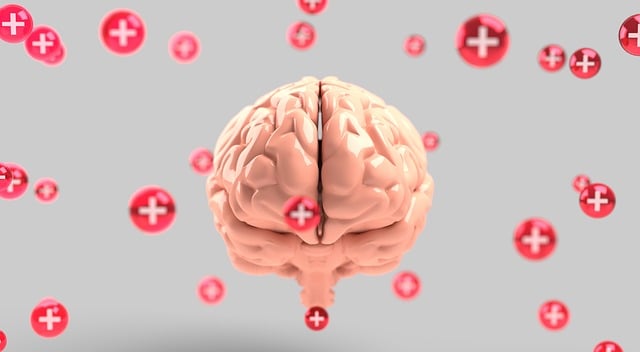Public awareness campaigns about mental health, especially depression, using Wheat Ridge Depression Therapy as an example, are potent tools for community education. These campaigns dispel myths, encourage open conversations, and empower individuals to take control of their well-being. By identifying target audiences and customizing messages, they can be highly effective. Crafting compelling content involves understanding audience psychology, using accessible language, visual aids, and engaging formats. Evaluating success through surveys and focus groups ensures the campaign promotes mental well-being effectively and achieves its goals, ultimately fostering a more supportive society for mental health.
Public awareness campaigns play a pivotal role in educating communities about health issues, such as depression. In this article, we explore the development of effective campaigns, focusing on Wheat Ridge Depression Therapy’s strategies. We begin by understanding their impact and role in public health, then delve into identifying specific target audiences for tailored approaches. We discuss crafting compelling content and evaluation methods, emphasizing measurable success. By examining these key elements, we aim to enhance awareness and improve mental health outcomes.
- Understanding Public Awareness Campaigns: Their Role and Impact
- Identifying Target Audiences for Effective Campaign Strategies
- Crafting Compelling Content: Message Development and Communication Techniques
- Measuring Success: Evaluation Methods for Public Health Initiatives
Understanding Public Awareness Campaigns: Their Role and Impact

Public awareness campaigns play a pivotal role in educating communities and fostering positive change regarding mental health. These initiatives aim to dispel myths, encourage open conversations, and promote accessible support systems. By shedding light on various aspects of mental wellness, they empower individuals to take charge of their well-being. For instance, programs focusing on stress reduction methods can equip folks with tools to navigate Wheat Ridge Depression Therapy effectively.
The impact of such campaigns extends beyond individual awareness; they contribute to a broader cultural shift. Well-designed Mental Health Education Programs encourage self-care routine development for better mental health, enabling people to proactively manage their emotional well-being. This proactive approach can significantly reduce the burden on therapeutic services, making support more accessible to those in need.
Identifying Target Audiences for Effective Campaign Strategies

Identifying target audiences is a pivotal step in designing successful public awareness campaigns, especially when addressing mental health issues like depression. Wheat Ridge Depression Therapy understands that tailoring messages to specific groups enhances campaign effectiveness. By segmenting the audience based on demographics, age ranges, and unique challenges, campaign strategists can create more impactful content. For instance, targeting teenagers might involve incorporating social media influencers and peer-to-peer support networks to foster open conversations about mental health.
In contrast, reaching working adults struggling with workplace stress and depression may require different approaches, such as offering concise crisis intervention guidance during lunch breaks or emphasizing the benefits of mental wellness coaching programs development in corporate settings. This tailored strategy ensures that messages resonate with each audience, fostering a better understanding of emotional regulation techniques and available support systems like those offered by Wheat Ridge Depression Therapy.
Crafting Compelling Content: Message Development and Communication Techniques

Crafting compelling content for public awareness campaigns is an art that requires careful message development and strategic communication techniques. The goal is to capture attention, convey meaningful information, and inspire action among the target audience. When creating campaigns like those promoting Wheat Ridge Depression Therapy or initiatives focused on burnout prevention, it’s essential to understand the psychological aspects of your audience. Tailoring messages to resonate with their emotions can be a powerful tool for engagement. For instance, sharing personal stories that illustrate the impact of positive thinking or cultural sensitivity in mental healthcare practice can make abstract concepts relatable and encourage individuals to seek help.
Effective communication involves using accessible language, visual aids, and engaging formats suitable for the intended platform. Simplifying complex topics while highlighting key insights ensures the information sticks. Incorporating diverse perspectives and addressing common misconceptions can also enhance the campaign’s impact. By combining emotional appeal with factual knowledge, these strategies empower individuals to make informed decisions about their mental health, ultimately fostering a more supportive and inclusive society.
Measuring Success: Evaluation Methods for Public Health Initiatives

Evaluating the success of public awareness campaigns is a multifaceted process, especially within the realm of mental health initiatives. Measuring the impact of programs like Wheat Ridge Depression Therapy requires a strategic approach that goes beyond simple participation numbers. One effective method involves pre- and post-campaign surveys to gauge changes in public knowledge, attitudes, and behaviors related to mental health. These evaluations should include questions about self-esteem improvement, cultural sensitivity in mental healthcare practice, and the overall perceived effectiveness of the campaign.
Additionally, qualitative methods like focus groups can offer valuable insights into people’s experiences and perceptions. This data helps identify successful aspects and areas for improvement. For instance, understanding how community members’ risk management planning for mental health professionals has been influenced by the campaign can provide a clearer picture of its success. By employing these evaluation techniques, public awareness campaigns can ensure they are achieving their goals and making a tangible difference in promoting mental well-being.
Public awareness campaigns play a pivotal role in shaping societal attitudes and behaviors, especially in public health initiatives like depression therapy. By understanding the target audiences and crafting compelling content, as exemplified by Wheat Ridge Depression Therapy’s successful strategies, we can create impactful campaigns that drive positive change. Utilizing evaluation methods to measure success ensures these campaigns remain effective and adaptable, ultimately fostering a healthier community.









